Details of the Target
General Information of Target
Target Site Mutations in Different Cell Lines
| Cell line | Mutation details | Probe for labeling this protein in this cell | |||
|---|---|---|---|---|---|
| A431 | Deletion: p.L62del | . | |||
| C4II | SNV: p.S99F | DBIA Probe Info | |||
| CAL27 | Deletion: p.I175TfsTer30 | DBIA Probe Info | |||
| HCT15 | SNV: p.P232H | . | |||
| HEC1 | SNV: p.R68Ter; p.K121E | DBIA Probe Info | |||
| HEC1B | SNV: p.R68Ter; p.K121E | . | |||
| HT115 | SNV: p.R68Q | . | |||
| ICC9 | SNV: p.R233Q | . | |||
| JURKAT | SNV: p.L48R | Compound 10 Probe Info | |||
| KYM1 | SNV: p.R68P | DBIA Probe Info | |||
| KYSE150 | SNV: p.Q125Ter | DBIA Probe Info | |||
| MINO | SNV: p.F3C | . | |||
| RKO | Deletion: p.F120del | DBIA Probe Info | |||
| SKMEL2 | SNV: p.Q215H | DBIA Probe Info | |||
| SUPT1 | SNV: p.R233Q | DBIA Probe Info | |||
Probe(s) Labeling This Target
ABPP Probe
| Probe name | Structure | Binding Site(Ratio) | Interaction ID | Ref | |
|---|---|---|---|---|---|
|
m-APA Probe Info |
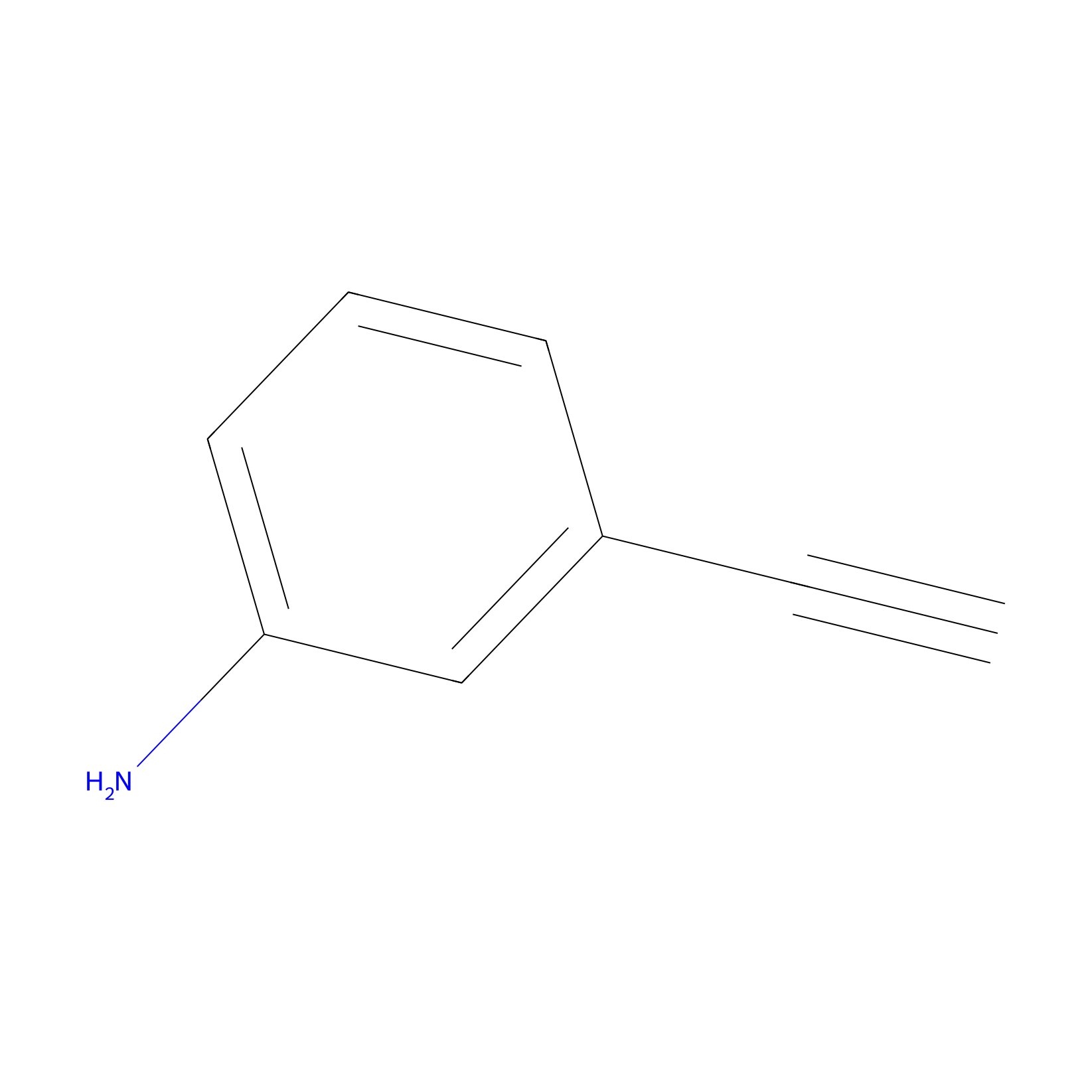 |
13.11 | LDD0402 | [1] | |
|
STPyne Probe Info |
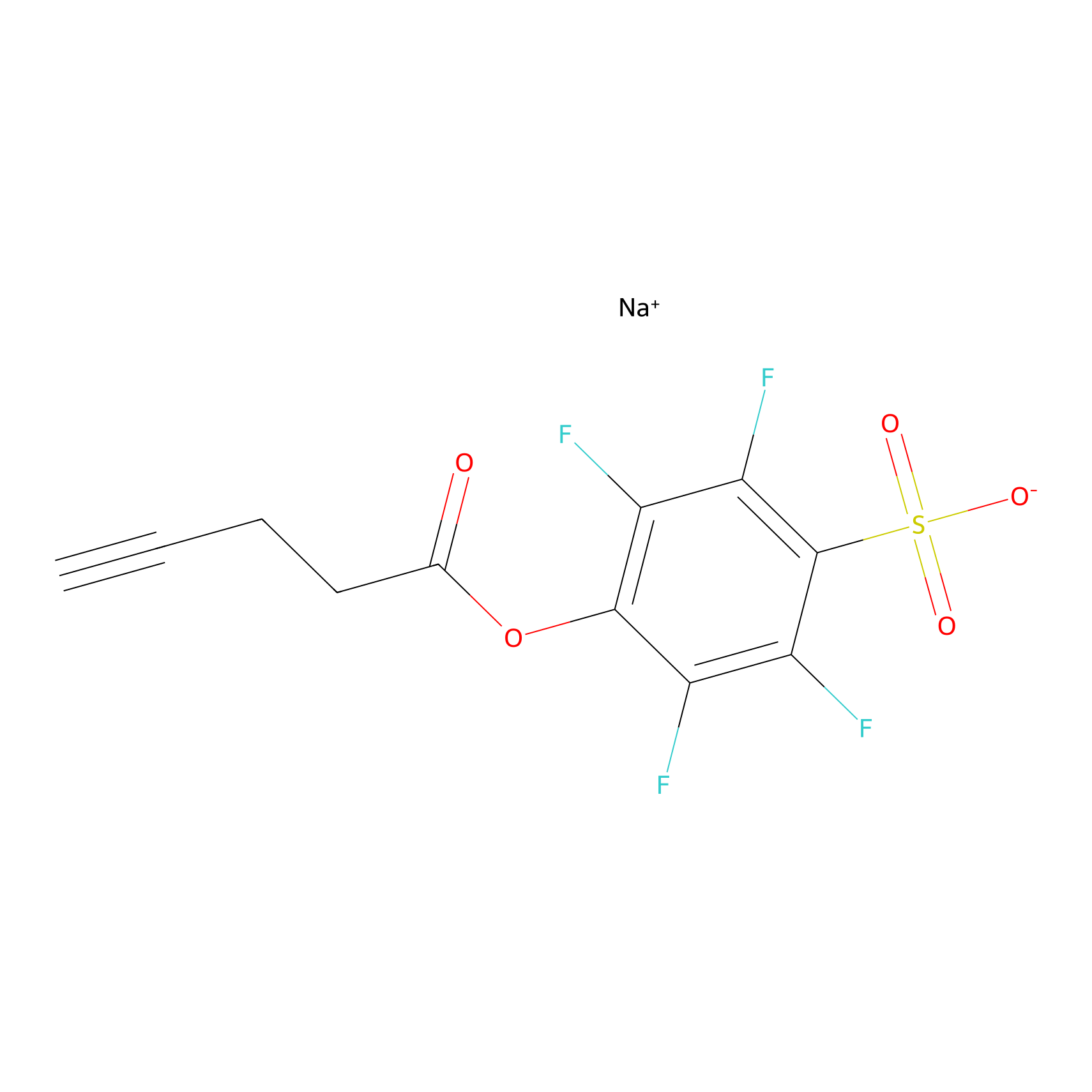 |
K130(1.69) | LDD0277 | [2] | |
|
DBIA Probe Info |
 |
C419(1.43) | LDD3310 | [3] | |
|
BTD Probe Info |
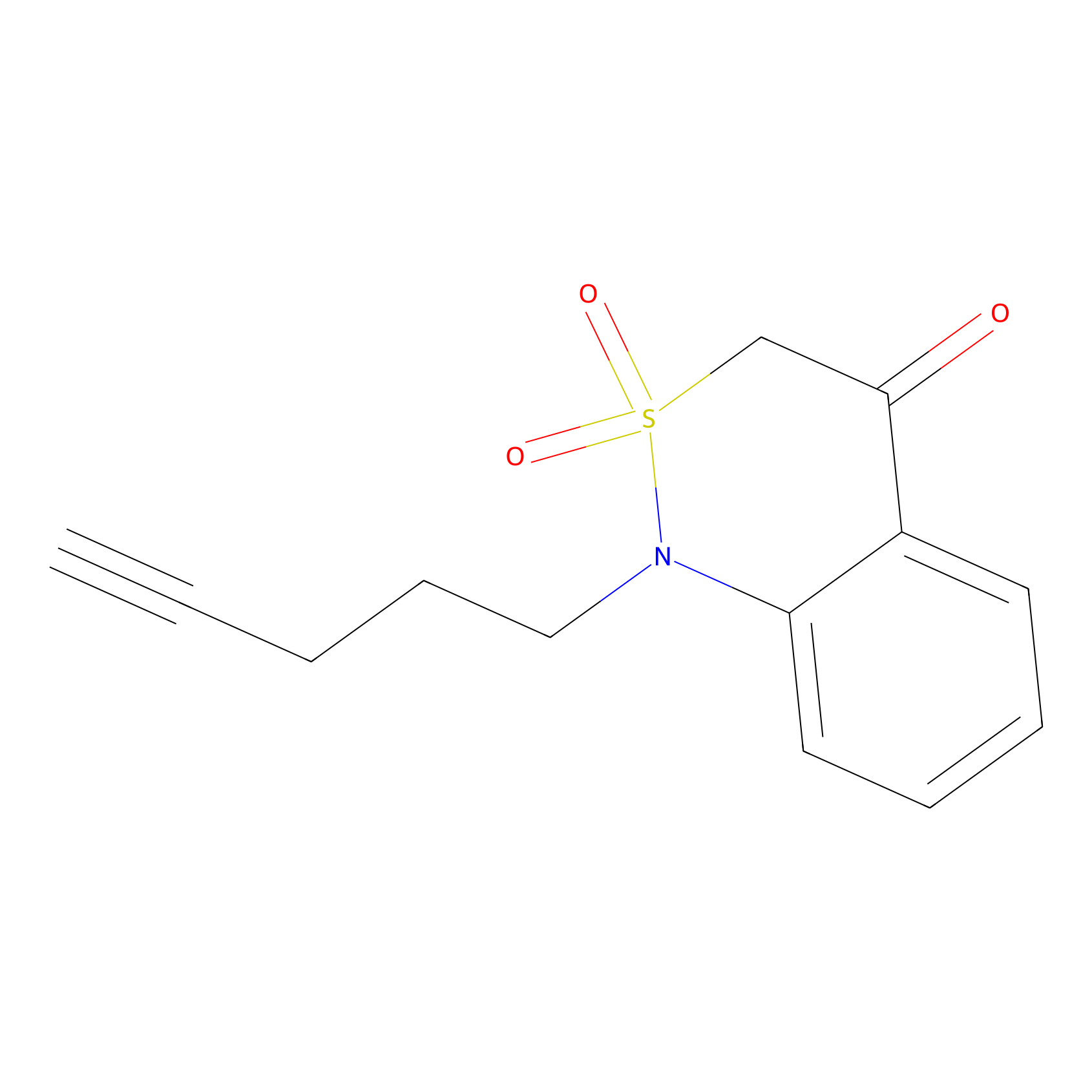 |
C164(1.97) | LDD1700 | [4] | |
|
Johansson_61 Probe Info |
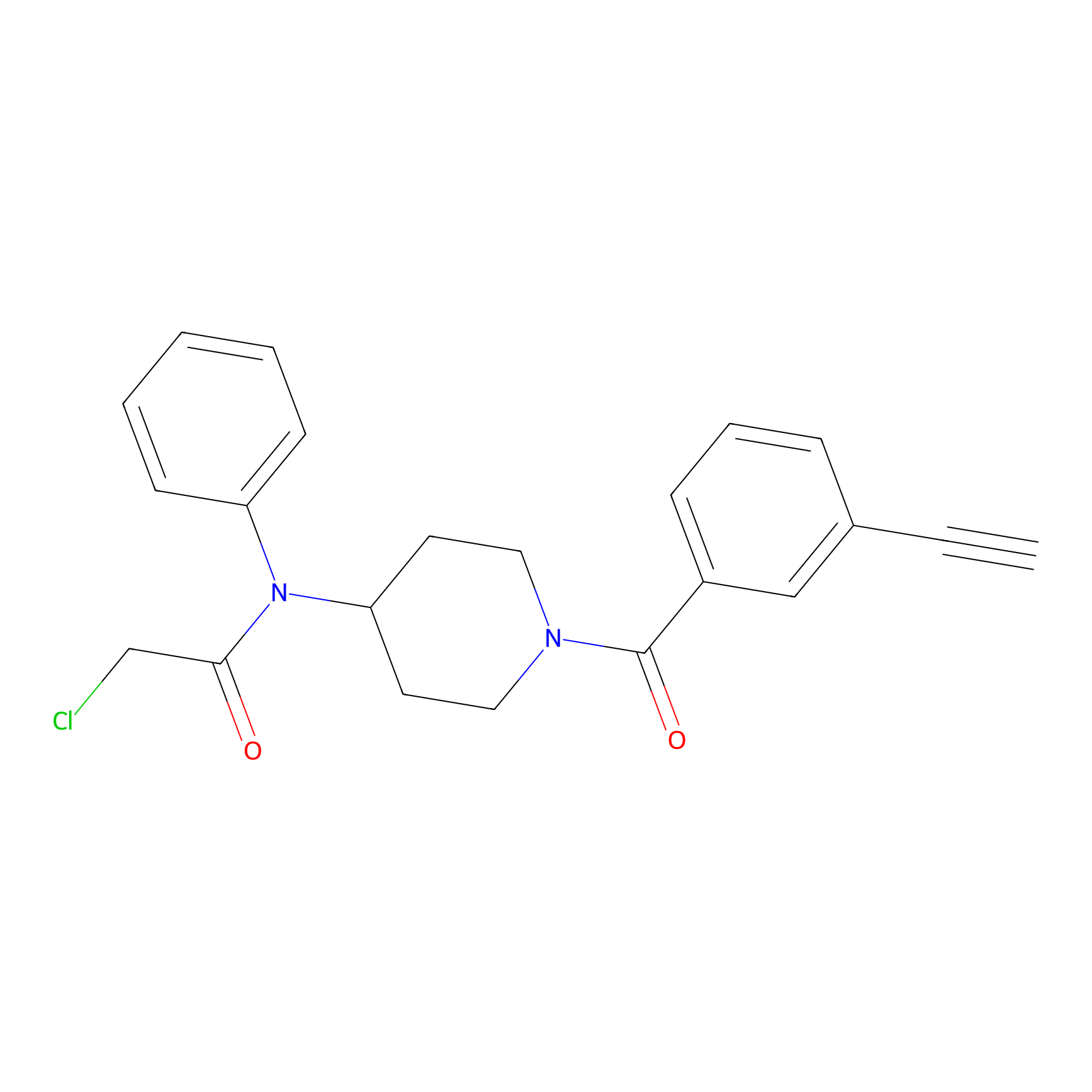 |
_(17.88) | LDD1485 | [5] | |
|
AHL-Pu-1 Probe Info |
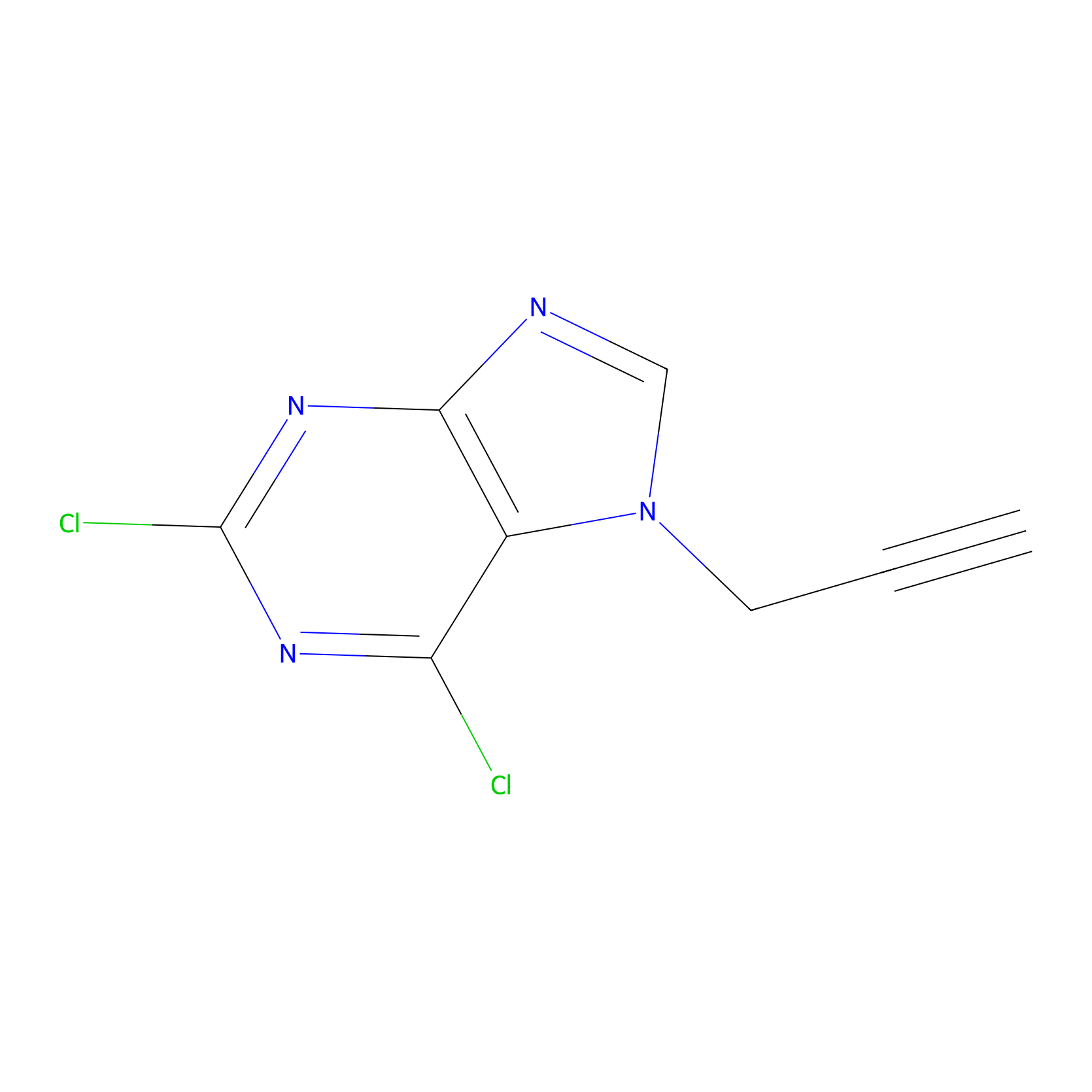 |
C426(2.75) | LDD0168 | [6] | |
|
HHS-475 Probe Info |
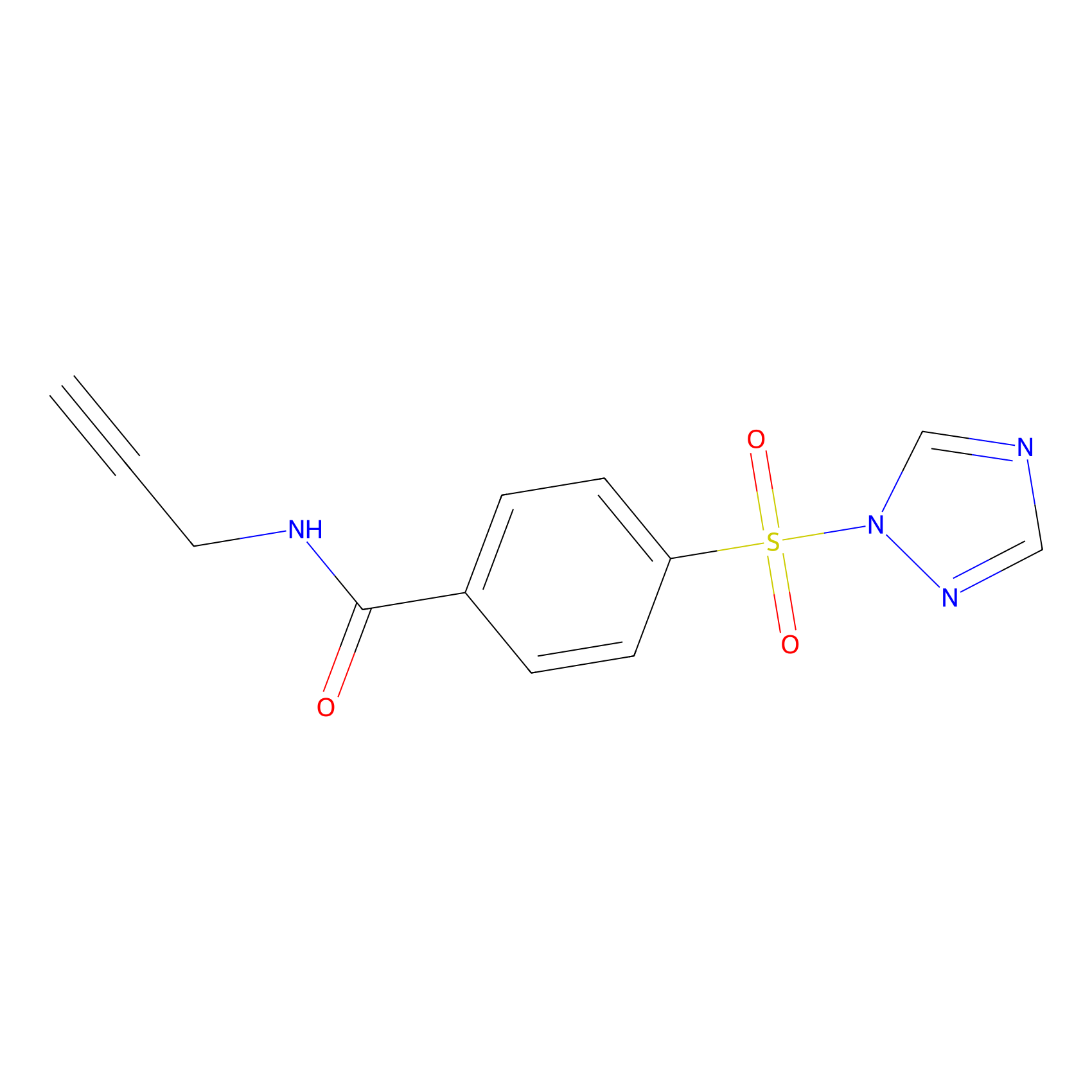 |
Y365(1.06) | LDD0265 | [7] | |
|
4-Iodoacetamidophenylacetylene Probe Info |
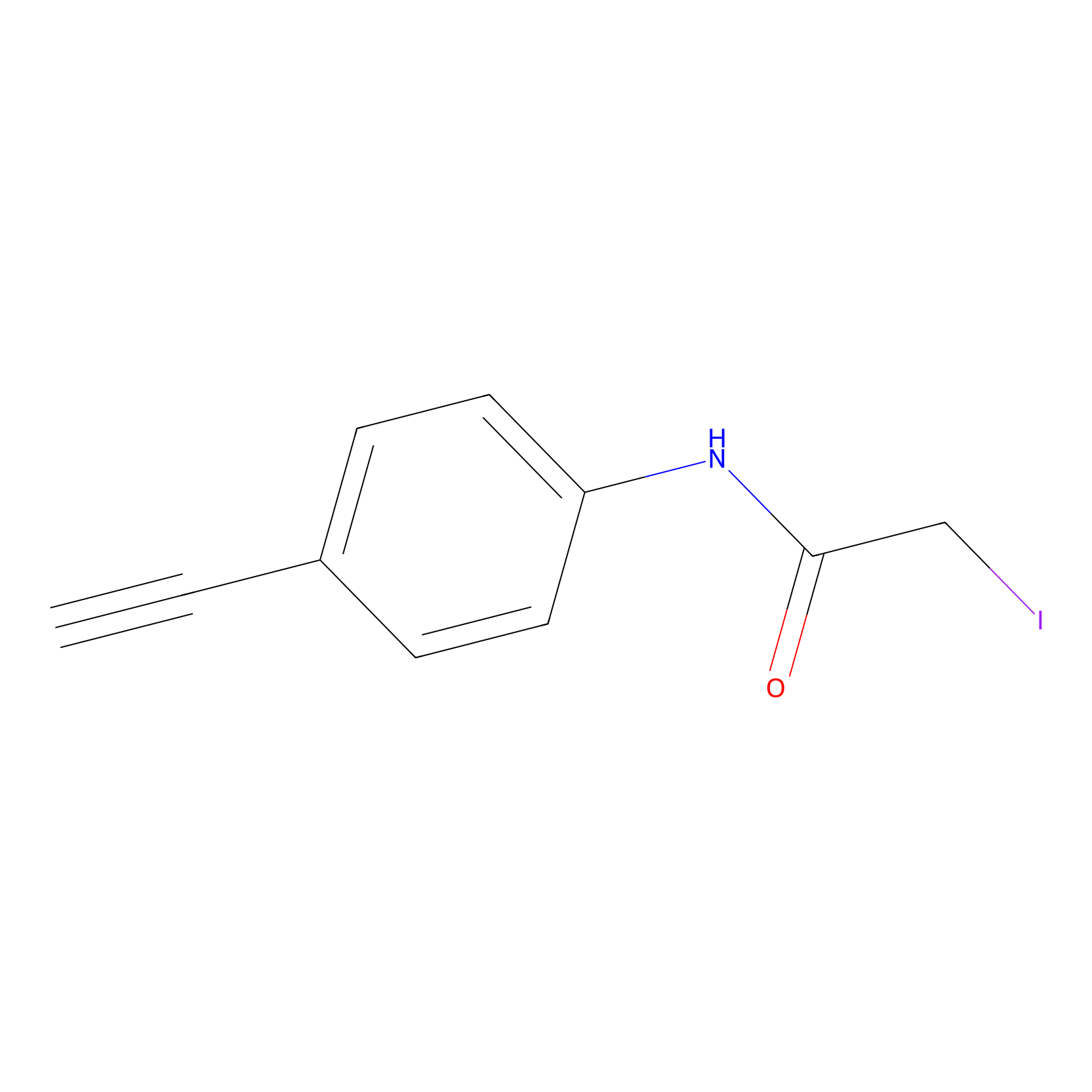 |
C345(0.00); C236(0.00); C426(0.00); C360(0.00) | LDD0038 | [8] | |
|
IA-alkyne Probe Info |
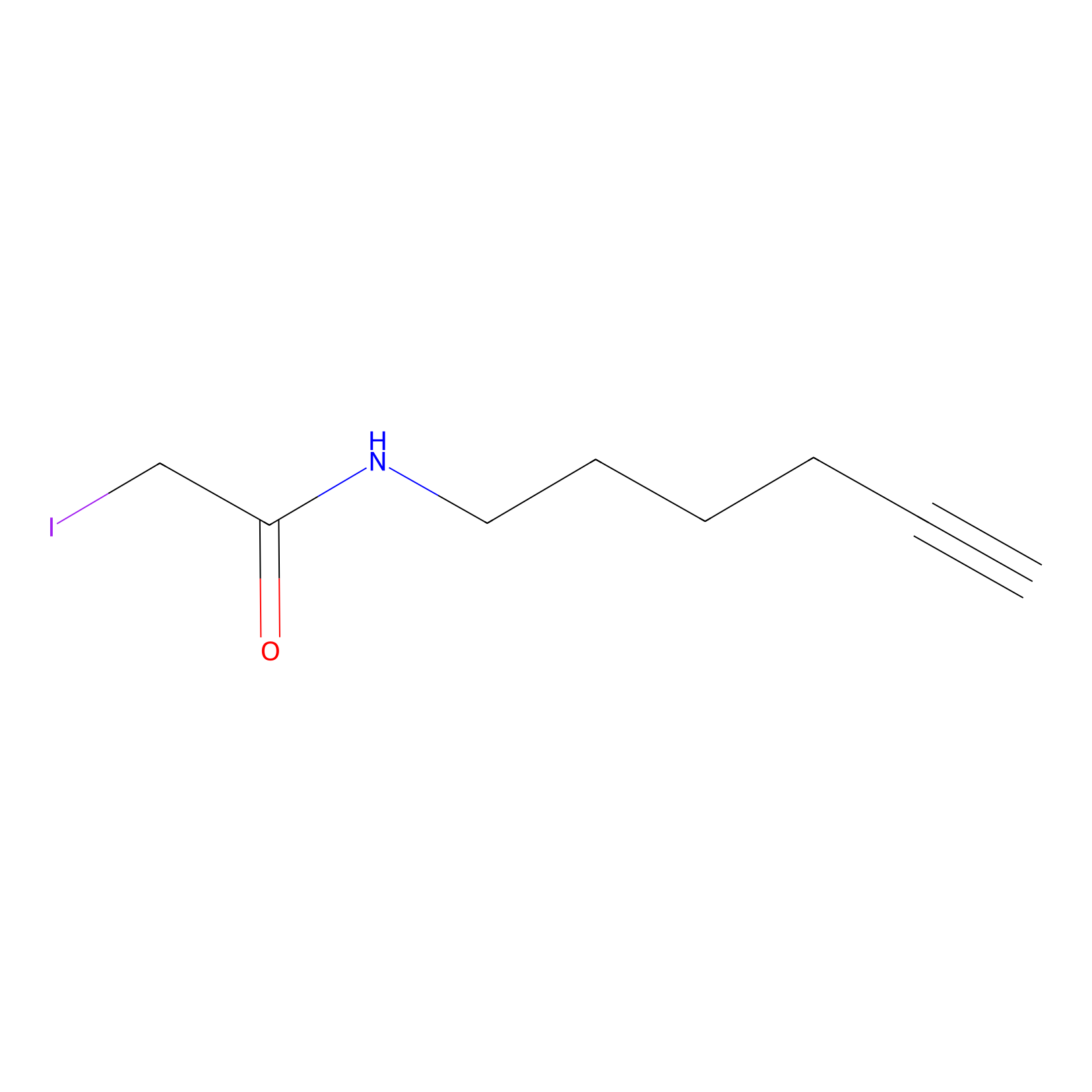 |
C131(0.00); C345(0.00); C236(0.00); C426(0.00) | LDD0036 | [8] | |
|
Lodoacetamide azide Probe Info |
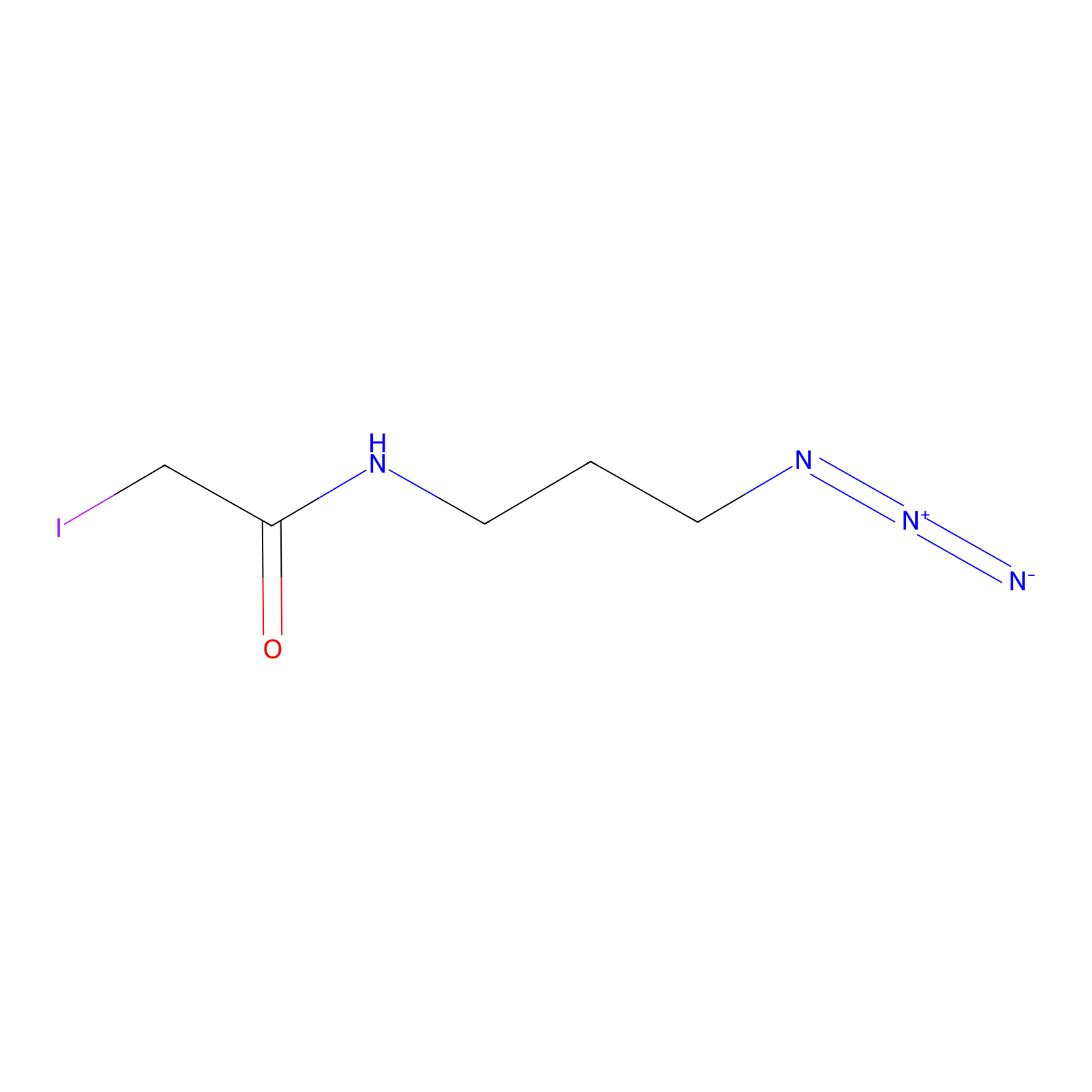 |
C131(0.00); C236(0.00); C426(0.00); C164(0.00) | LDD0037 | [8] | |
|
NAIA_4 Probe Info |
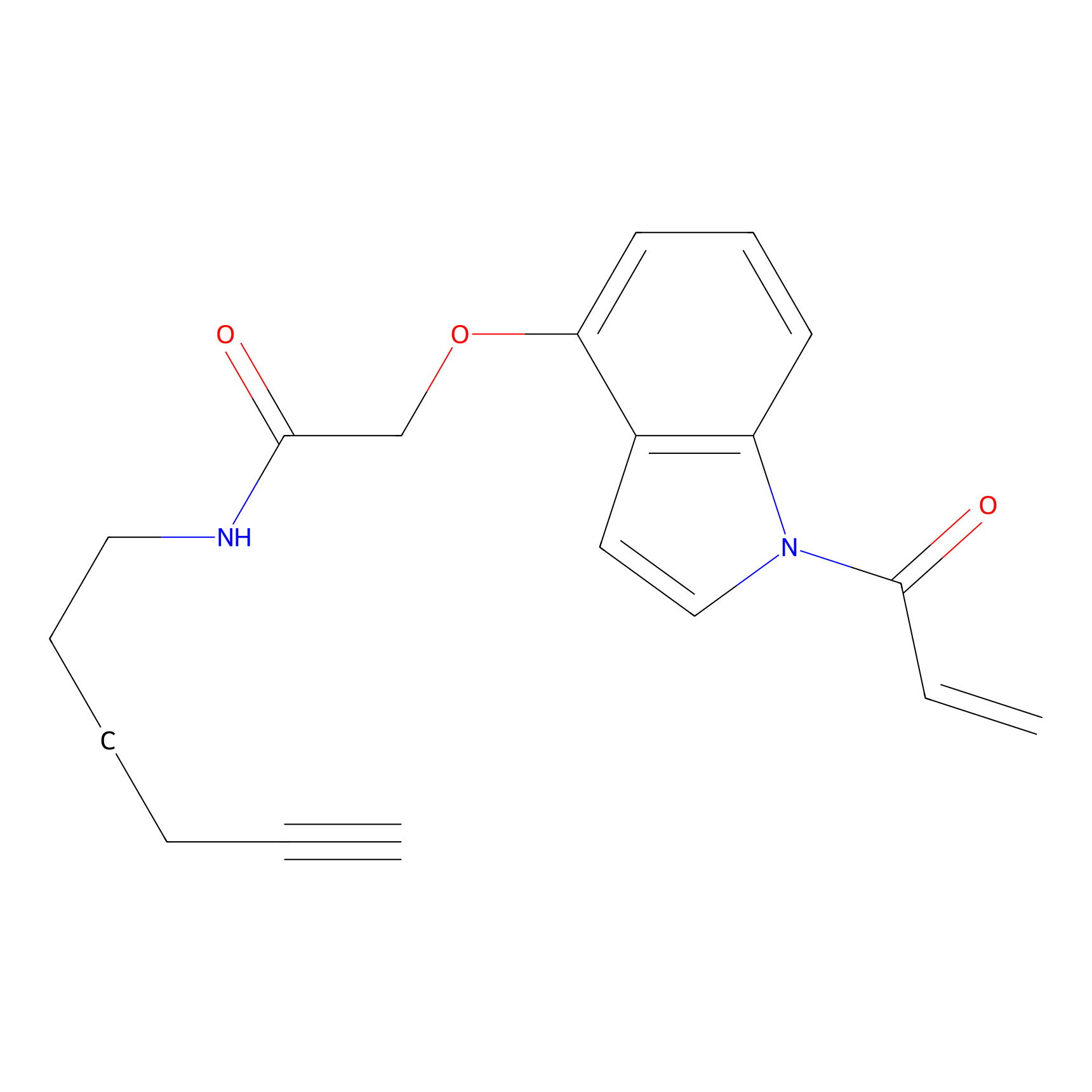 |
N.A. | LDD2226 | [9] | |
|
WYneO Probe Info |
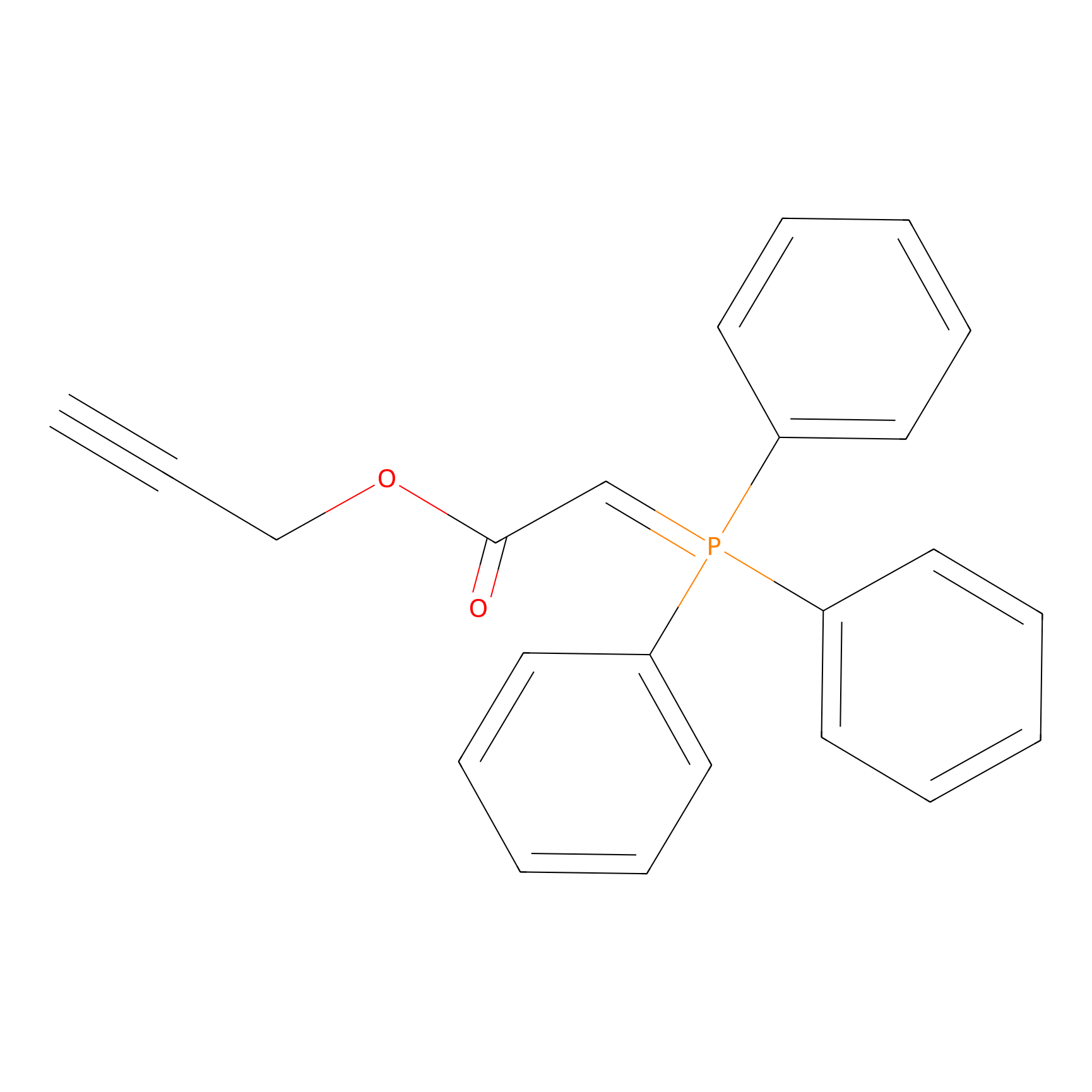 |
N.A. | LDD0022 | [10] | |
|
Compound 10 Probe Info |
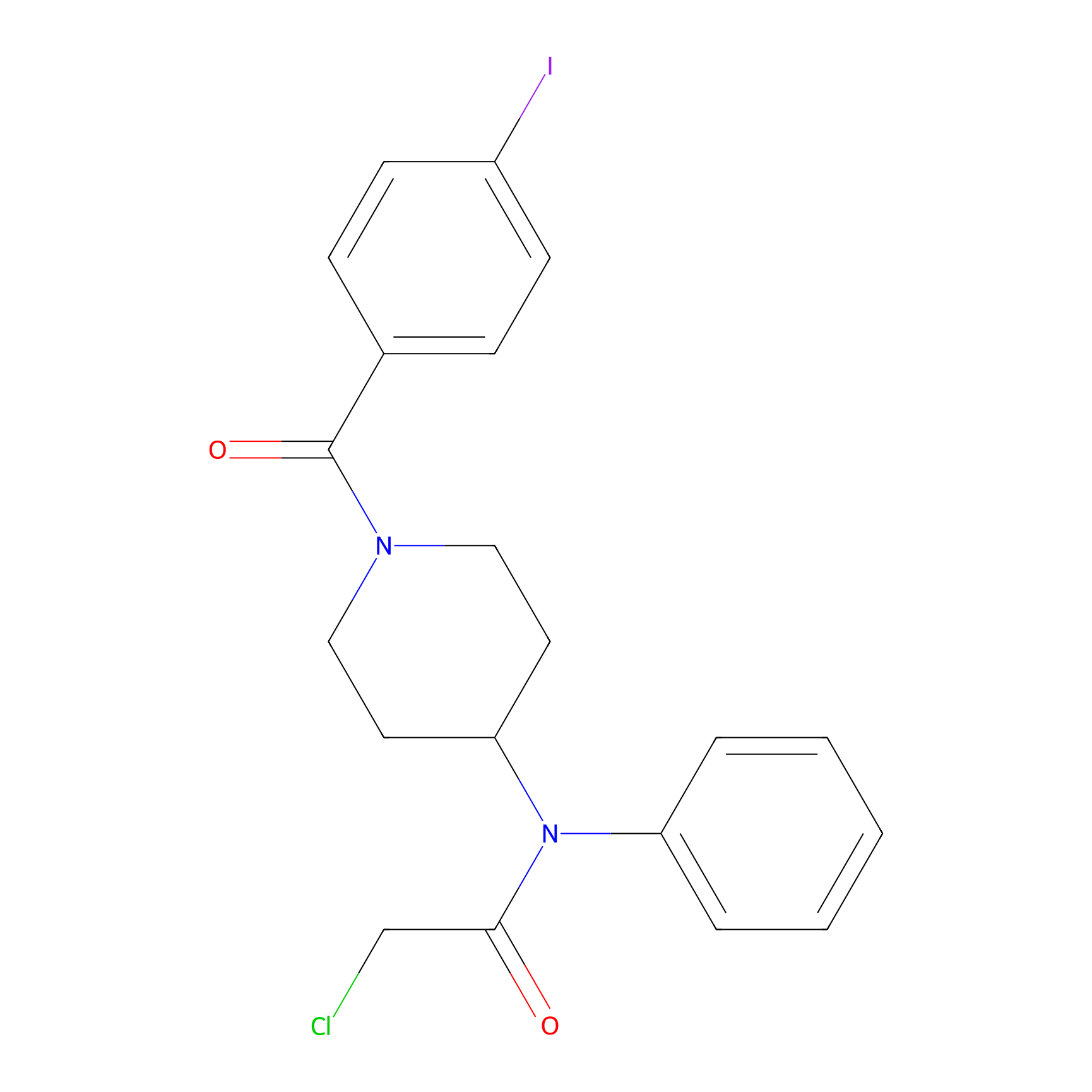 |
N.A. | LDD2216 | [11] | |
|
Compound 11 Probe Info |
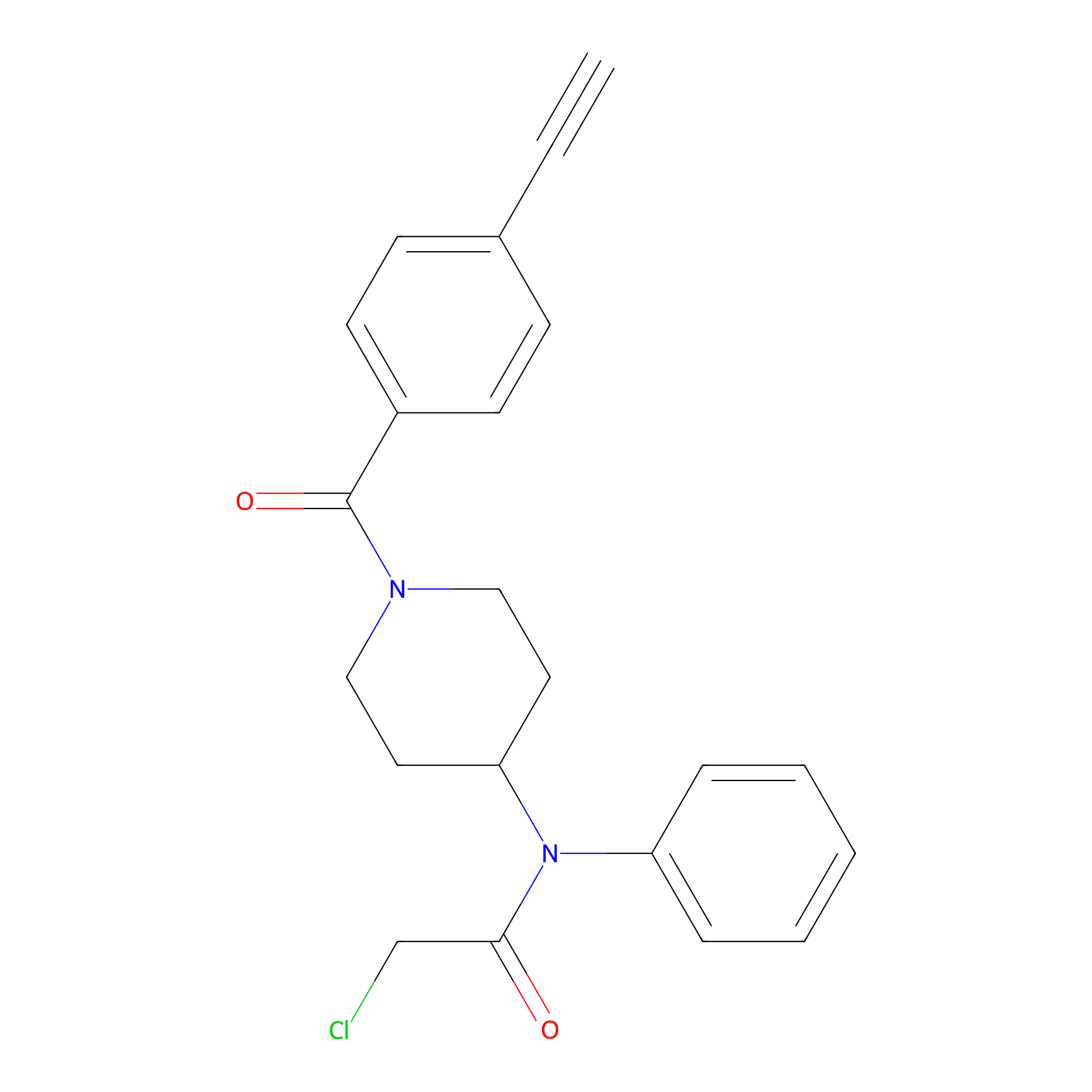 |
N.A. | LDD2213 | [11] | |
|
IPM Probe Info |
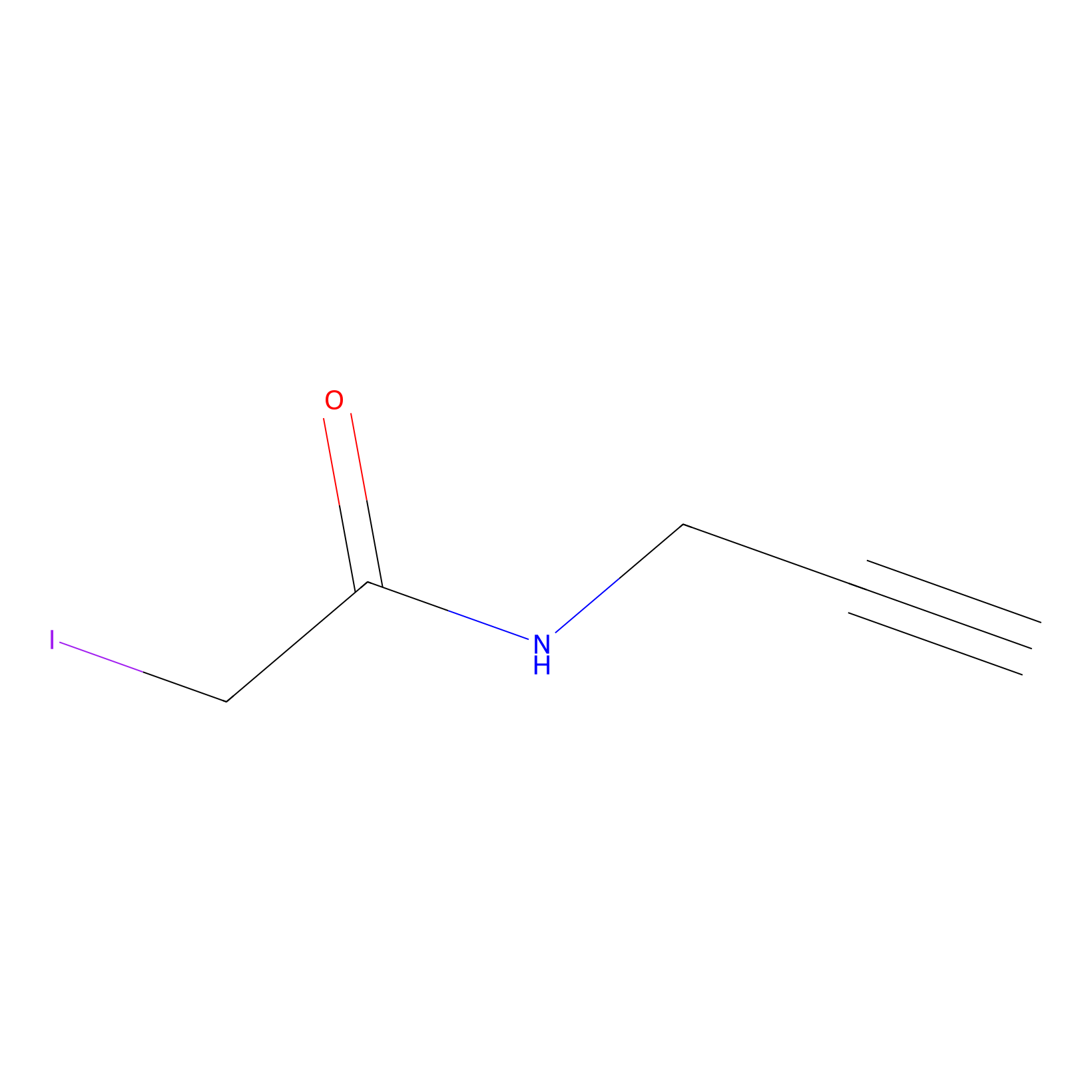 |
N.A. | LDD0005 | [10] | |
|
TFBX Probe Info |
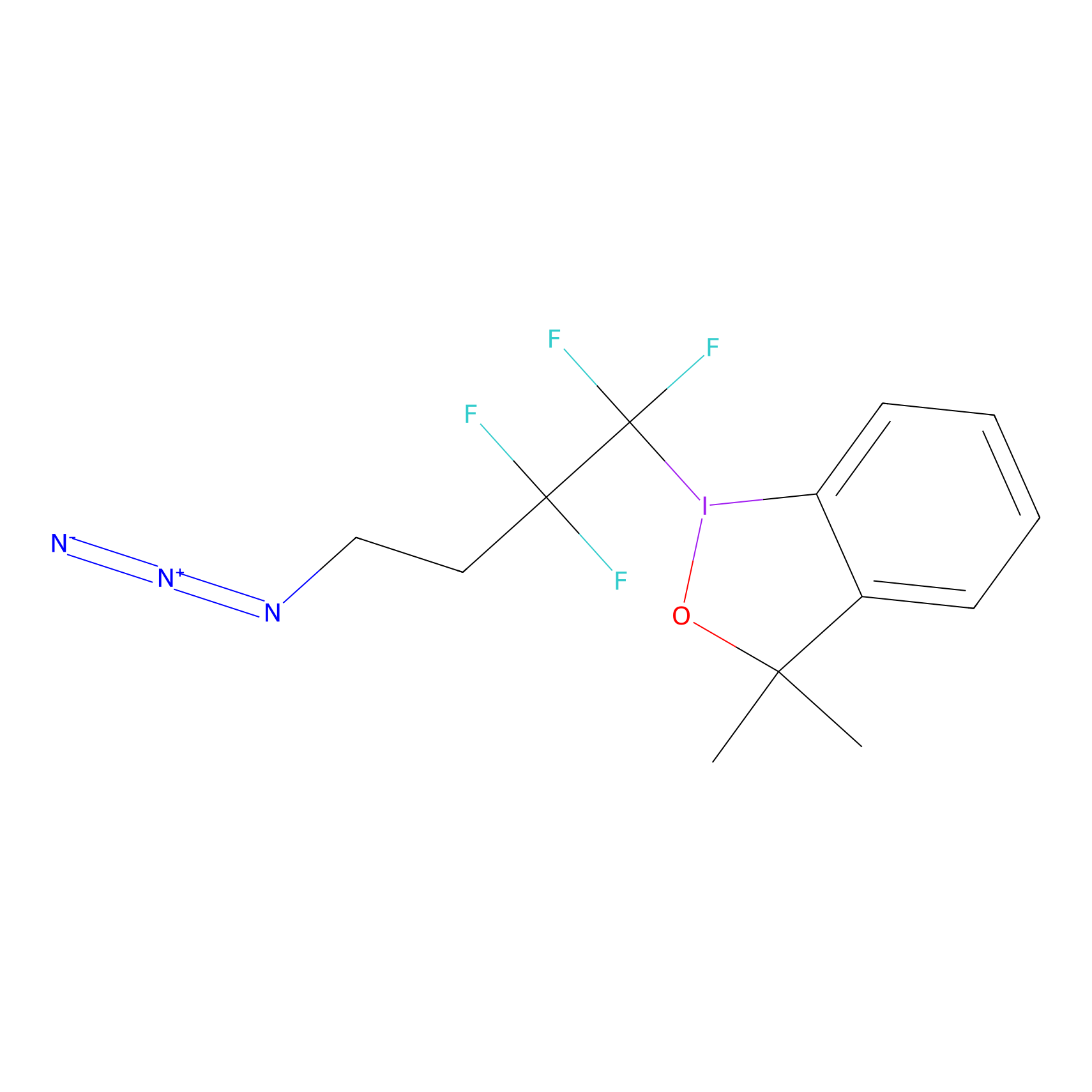 |
N.A. | LDD0148 | [12] | |
|
Acrolein Probe Info |
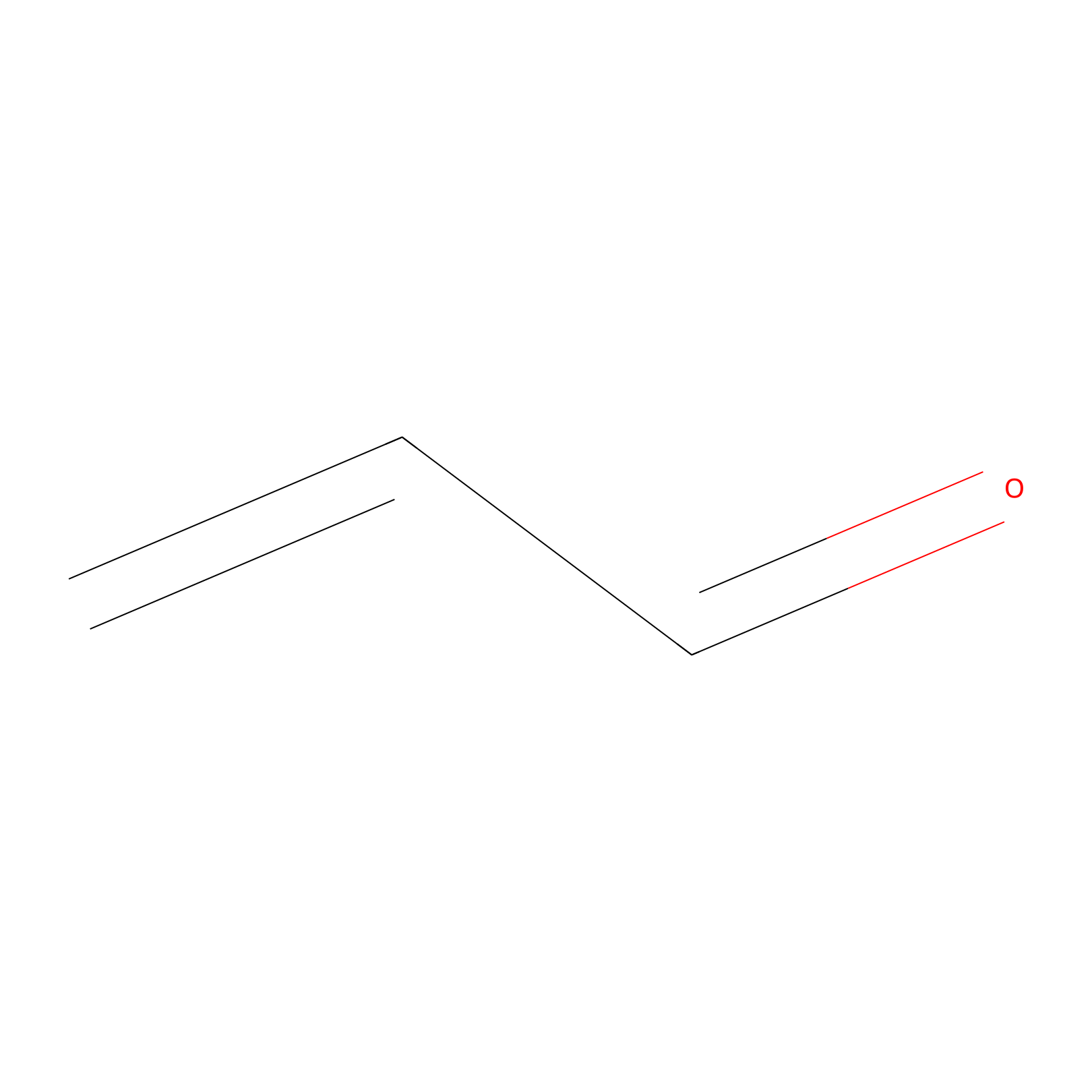 |
N.A. | LDD0217 | [13] | |
|
AOyne Probe Info |
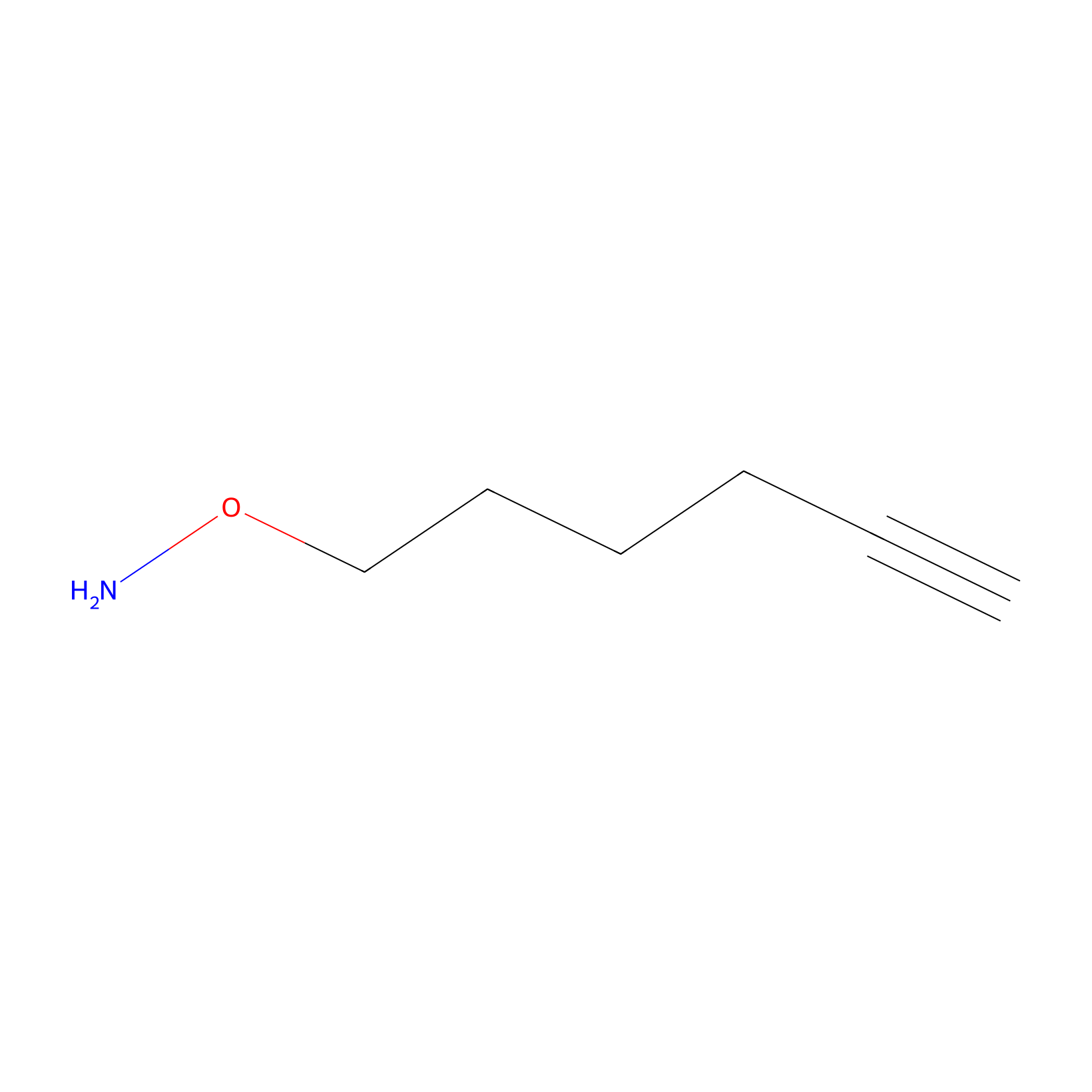 |
8.10 | LDD0443 | [14] | |
|
NAIA_5 Probe Info |
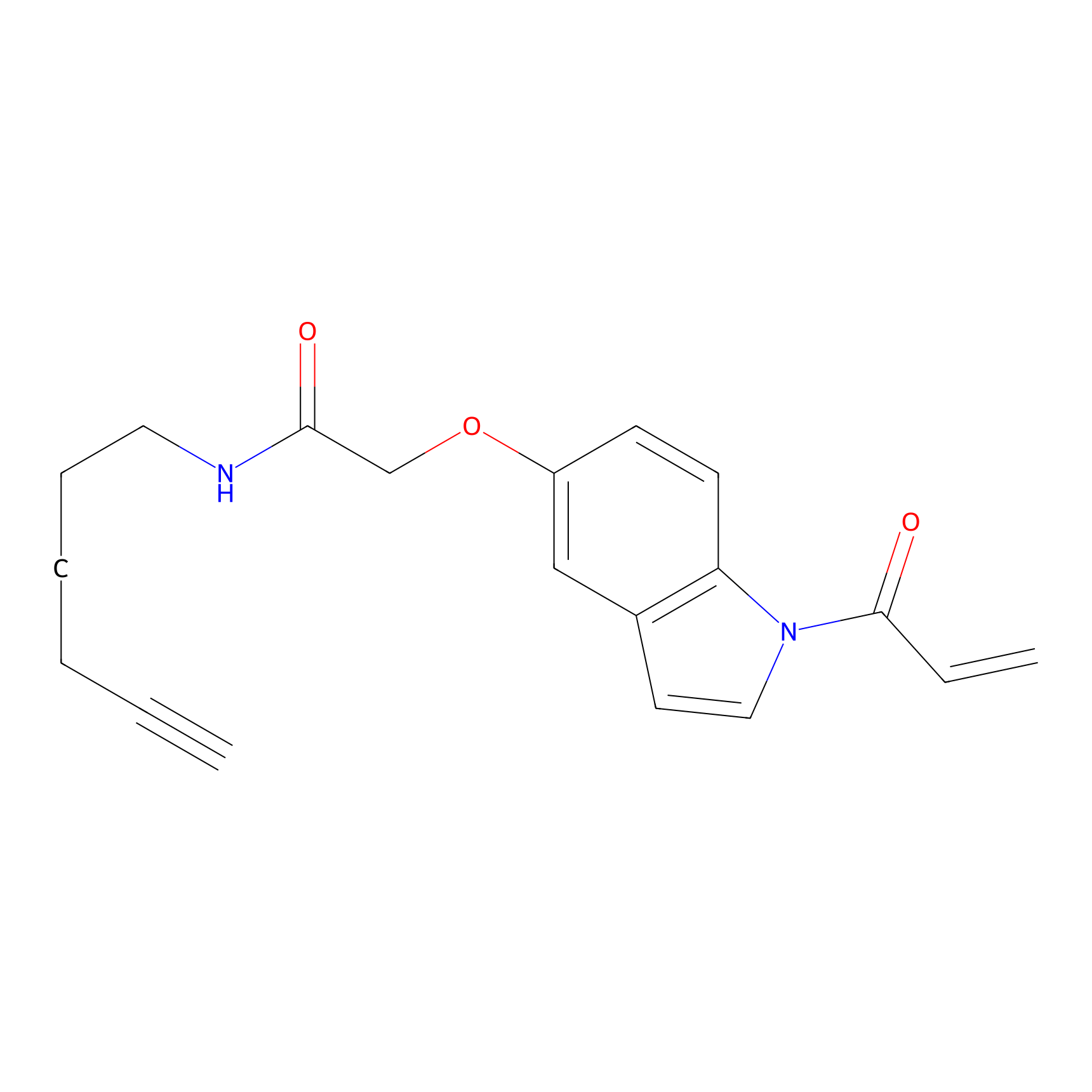 |
N.A. | LDD2223 | [9] | |
Competitor(s) Related to This Target
| Competitor ID | Name | Cell line | Binding Site(Ratio) | Interaction ID | Ref |
|---|---|---|---|---|---|
| LDCM0548 | 1-(4-(Benzo[d][1,3]dioxol-5-ylmethyl)piperazin-1-yl)-2-nitroethan-1-one | MDA-MB-231 | C164(0.51) | LDD2142 | [4] |
| LDCM0537 | 2-Cyano-N,N-dimethylacetamide | MDA-MB-231 | C164(0.68) | LDD2130 | [4] |
| LDCM0524 | 2-Cyano-N-(2-morpholin-4-yl-ethyl)-acetamide | MDA-MB-231 | C164(0.96) | LDD2117 | [4] |
| LDCM0558 | 2-Cyano-N-phenylacetamide | MDA-MB-231 | C164(1.28) | LDD2152 | [4] |
| LDCM0538 | 4-(Cyanoacetyl)morpholine | MDA-MB-231 | C164(0.93) | LDD2131 | [4] |
| LDCM0025 | 4SU-RNA | HEK-293T | C426(2.75) | LDD0168 | [6] |
| LDCM0026 | 4SU-RNA+native RNA | HEK-293T | C426(2.08); C360(3.64) | LDD0169 | [6] |
| LDCM0545 | Acetamide | MDA-MB-231 | C164(0.37) | LDD2138 | [4] |
| LDCM0520 | AKOS000195272 | MDA-MB-231 | C164(0.71) | LDD2113 | [4] |
| LDCM0156 | Aniline | NCI-H1299 | 9.12 | LDD0403 | [1] |
| LDCM0498 | BS-3668 | MDA-MB-231 | C164(0.37) | LDD2091 | [4] |
| LDCM0630 | CCW28-3 | 231MFP | C360(0.71) | LDD2214 | [15] |
| LDCM0108 | Chloroacetamide | HeLa | N.A. | LDD0222 | [13] |
| LDCM0213 | Electrophilic fragment 2 | MDA-MB-231 | C360(1.25) | LDD1702 | [4] |
| LDCM0202 | EV-93 | T cell | C360(13.65) | LDD0514 | [16] |
| LDCM0625 | F8 | Ramos | C164(0.51); C360(0.98) | LDD2187 | [17] |
| LDCM0572 | Fragment10 | MDA-MB-231 | C360(2.81) | LDD1389 | [5] |
| LDCM0573 | Fragment11 | MDA-MB-231 | C360(20.00) | LDD1391 | [5] |
| LDCM0574 | Fragment12 | Ramos | C164(0.74); C360(1.01) | LDD2191 | [17] |
| LDCM0575 | Fragment13 | MDA-MB-231 | C360(1.20) | LDD1469 | [5] |
| LDCM0576 | Fragment14 | MDA-MB-231 | C360(1.42) | LDD1397 | [5] |
| LDCM0579 | Fragment20 | MDA-MB-231 | C360(1.88) | LDD1402 | [5] |
| LDCM0580 | Fragment21 | MDA-MB-231 | C360(1.87) | LDD1404 | [5] |
| LDCM0582 | Fragment23 | MDA-MB-231 | C360(1.39) | LDD1408 | [5] |
| LDCM0583 | Fragment24 | Ramos | C360(1.35) | LDD1410 | [5] |
| LDCM0584 | Fragment25 | MDA-MB-231 | C360(0.98) | LDD1411 | [5] |
| LDCM0578 | Fragment27 | MDA-MB-231 | C360(0.83) | LDD1401 | [5] |
| LDCM0586 | Fragment28 | MDA-MB-231 | C360(1.11) | LDD1415 | [5] |
| LDCM0587 | Fragment29 | Ramos | C360(1.60) | LDD1476 | [5] |
| LDCM0588 | Fragment30 | MDA-MB-231 | C360(1.96) | LDD1419 | [5] |
| LDCM0589 | Fragment31 | MDA-MB-231 | C360(0.54) | LDD1477 | [5] |
| LDCM0590 | Fragment32 | Ramos | C164(0.63); C360(1.60) | LDD2201 | [17] |
| LDCM0468 | Fragment33 | MDA-MB-231 | C360(3.05) | LDD1425 | [5] |
| LDCM0593 | Fragment35 | Ramos | C360(1.31) | LDD1430 | [5] |
| LDCM0595 | Fragment37 | Ramos | C360(1.02) | LDD1432 | [5] |
| LDCM0596 | Fragment38 | MDA-MB-231 | C360(0.96) | LDD1433 | [5] |
| LDCM0566 | Fragment4 | MDA-MB-231 | C360(12.31) | LDD1378 | [5] |
| LDCM0599 | Fragment41 | MDA-MB-231 | C360(0.96) | LDD1438 | [5] |
| LDCM0603 | Fragment45 | MDA-MB-231 | C360(20.00) | LDD1482 | [5] |
| LDCM0610 | Fragment52 | Ramos | C164(0.98); C360(0.86) | LDD2204 | [17] |
| LDCM0612 | Fragment54 | MDA-MB-231 | C360(1.16) | LDD1456 | [5] |
| LDCM0614 | Fragment56 | MDA-MB-231 | C360(1.03) | LDD1458 | [5] |
| LDCM0615 | Fragment63-R | Jurkat | _(15.23) | LDD1487 | [5] |
| LDCM0617 | Fragment63-S | Jurkat | _(11.95) | LDD1490 | [5] |
| LDCM0569 | Fragment7 | Jurkat | _(17.88) | LDD1485 | [5] |
| LDCM0570 | Fragment8 | Ramos | C360(1.39) | LDD1386 | [5] |
| LDCM0571 | Fragment9 | Ramos | C360(3.18) | LDD1464 | [5] |
| LDCM0117 | HHS-0201 | DM93 | Y365(1.06) | LDD0265 | [7] |
| LDCM0119 | HHS-0401 | DM93 | Y365(0.98) | LDD0267 | [7] |
| LDCM0015 | HNE | MDA-MB-231 | C360(0.99) | LDD0346 | [17] |
| LDCM0022 | KB02 | Ramos | 19.28 | LDD0431 | [18] |
| LDCM0023 | KB03 | MDA-MB-231 | C360(3.30) | LDD1376 | [5] |
| LDCM0024 | KB05 | COLO792 | C419(1.43) | LDD3310 | [3] |
| LDCM0169 | KB63 | Ramos | 20.00 | LDD0432 | [18] |
| LDCM0528 | N-(4-bromophenyl)-2-cyano-N-phenylacetamide | MDA-MB-231 | C164(0.47) | LDD2121 | [4] |
| LDCM0496 | Nucleophilic fragment 11a | MDA-MB-231 | C164(0.45) | LDD2089 | [4] |
| LDCM0499 | Nucleophilic fragment 12b | MDA-MB-231 | C164(0.85) | LDD2092 | [4] |
| LDCM0501 | Nucleophilic fragment 13b | MDA-MB-231 | C164(1.10) | LDD2094 | [4] |
| LDCM0503 | Nucleophilic fragment 14b | MDA-MB-231 | C164(0.22) | LDD2096 | [4] |
| LDCM0504 | Nucleophilic fragment 15a | MDA-MB-231 | C164(0.86) | LDD2097 | [4] |
| LDCM0506 | Nucleophilic fragment 16a | MDA-MB-231 | C164(0.95) | LDD2099 | [4] |
| LDCM0508 | Nucleophilic fragment 17a | MDA-MB-231 | C164(0.69) | LDD2101 | [4] |
| LDCM0511 | Nucleophilic fragment 18b | MDA-MB-231 | C164(0.44) | LDD2104 | [4] |
| LDCM0512 | Nucleophilic fragment 19a | MDA-MB-231 | C164(0.95) | LDD2105 | [4] |
| LDCM0514 | Nucleophilic fragment 20a | MDA-MB-231 | C164(1.00) | LDD2107 | [4] |
| LDCM0515 | Nucleophilic fragment 20b | MDA-MB-231 | C164(0.37) | LDD2108 | [4] |
| LDCM0516 | Nucleophilic fragment 21a | MDA-MB-231 | C164(0.62) | LDD2109 | [4] |
| LDCM0518 | Nucleophilic fragment 22a | MDA-MB-231 | C164(0.93) | LDD2111 | [4] |
| LDCM0522 | Nucleophilic fragment 24a | MDA-MB-231 | C164(0.42) | LDD2115 | [4] |
| LDCM0523 | Nucleophilic fragment 24b | MDA-MB-231 | C164(0.53) | LDD2116 | [4] |
| LDCM0525 | Nucleophilic fragment 25b | MDA-MB-231 | C164(0.60) | LDD2118 | [4] |
| LDCM0526 | Nucleophilic fragment 26a | MDA-MB-231 | C164(2.19) | LDD2119 | [4] |
| LDCM0527 | Nucleophilic fragment 26b | MDA-MB-231 | C164(0.48) | LDD2120 | [4] |
| LDCM0529 | Nucleophilic fragment 27b | MDA-MB-231 | C164(0.60) | LDD2122 | [4] |
| LDCM0530 | Nucleophilic fragment 28a | MDA-MB-231 | C164(0.58) | LDD2123 | [4] |
| LDCM0531 | Nucleophilic fragment 28b | MDA-MB-231 | C164(0.35) | LDD2124 | [4] |
| LDCM0532 | Nucleophilic fragment 29a | MDA-MB-231 | C164(0.64) | LDD2125 | [4] |
| LDCM0533 | Nucleophilic fragment 29b | MDA-MB-231 | C164(0.41) | LDD2126 | [4] |
| LDCM0534 | Nucleophilic fragment 30a | MDA-MB-231 | C164(0.86) | LDD2127 | [4] |
| LDCM0535 | Nucleophilic fragment 30b | MDA-MB-231 | C164(0.56) | LDD2128 | [4] |
| LDCM0536 | Nucleophilic fragment 31 | MDA-MB-231 | C164(0.91) | LDD2129 | [4] |
| LDCM0540 | Nucleophilic fragment 35 | MDA-MB-231 | C164(0.53) | LDD2133 | [4] |
| LDCM0541 | Nucleophilic fragment 36 | MDA-MB-231 | C164(0.40) | LDD2134 | [4] |
| LDCM0542 | Nucleophilic fragment 37 | MDA-MB-231 | C164(1.11) | LDD2135 | [4] |
| LDCM0543 | Nucleophilic fragment 38 | MDA-MB-231 | C164(1.09) | LDD2136 | [4] |
| LDCM0544 | Nucleophilic fragment 39 | MDA-MB-231 | C164(1.12) | LDD2137 | [4] |
| LDCM0211 | Nucleophilic fragment 3b | MDA-MB-231 | C164(1.97) | LDD1700 | [4] |
| LDCM0546 | Nucleophilic fragment 40 | MDA-MB-231 | C164(0.78) | LDD2140 | [4] |
| LDCM0549 | Nucleophilic fragment 43 | MDA-MB-231 | C164(0.54) | LDD2143 | [4] |
| LDCM0550 | Nucleophilic fragment 5a | MDA-MB-231 | C164(1.92) | LDD2144 | [4] |
| LDCM0552 | Nucleophilic fragment 6a | MDA-MB-231 | C164(0.70) | LDD2146 | [4] |
| LDCM0554 | Nucleophilic fragment 7a | MDA-MB-231 | C164(0.46) | LDD2148 | [4] |
| LDCM0555 | Nucleophilic fragment 7b | MDA-MB-231 | C164(0.33) | LDD2149 | [4] |
| LDCM0556 | Nucleophilic fragment 8a | MDA-MB-231 | C164(0.32) | LDD2150 | [4] |
| LDCM0557 | Nucleophilic fragment 8b | MDA-MB-231 | C164(0.59) | LDD2151 | [4] |
| LDCM0627 | NUDT7-COV-1 | HEK-293T | C360(0.33) | LDD2206 | [19] |
| LDCM0628 | OTUB2-COV-1 | HEK-293T | C360(0.90) | LDD2207 | [19] |
| LDCM0131 | RA190 | MM1.R | C203(1.49); C360(1.33) | LDD0304 | [20] |
| LDCM0170 | Structure8 | Ramos | 13.90 | LDD0433 | [18] |
The Interaction Atlas With This Target
The Protein(s) Related To This Target
Enzyme
Transporter and channel
| Protein name | Family | Uniprot ID | |||
|---|---|---|---|---|---|
| Amyloid-beta precursor protein (APP) | APP family | P05067 | |||
| B-cell receptor-associated protein 31 (BCAP31) | BCAP29/BCAP31 family | P51572 | |||
Transcription factor
| Protein name | Family | Uniprot ID | |||
|---|---|---|---|---|---|
| Androgen receptor (AR) | Nuclear hormone receptor family | P10275 | |||
Cytokine and receptor
Other
The Drug(s) Related To This Target
Investigative
References
